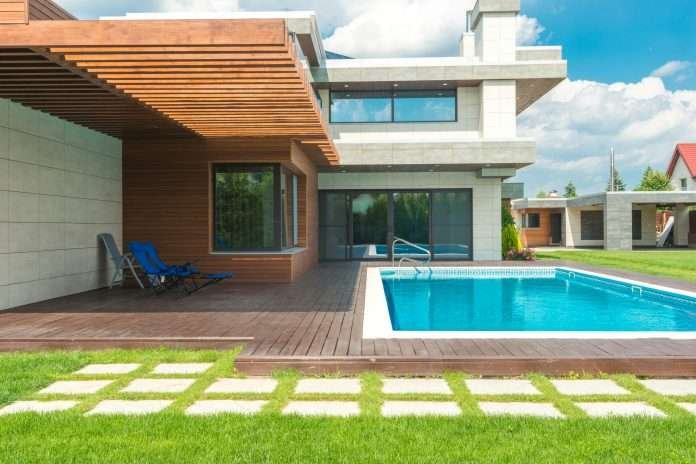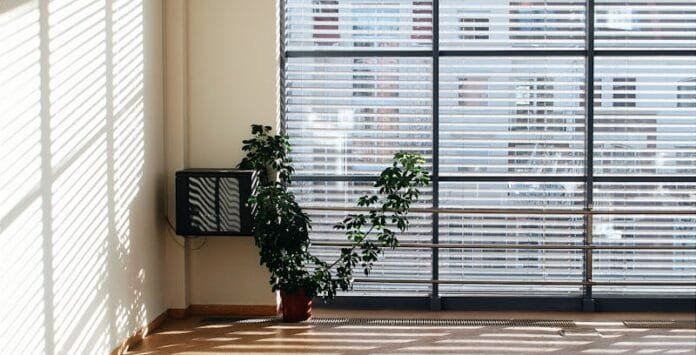Creating a seamless transition between your indoor and outdoor living spaces can transform the way you experience your home, allowing for a greater sense of connection to nature, increased natural light, and a more expansive feel. Doors play a crucial role in achieving this seamless transition, offering both visual and physical access to your outdoor areas. In this blog post, we’ll explore various door options and design strategies that can help you create a smooth, inviting flow between your interior and exterior spaces.
Embrace Bifold Doors
Bifold doors, also known as folding sliding doors, are an increasingly popular choice for homeowners seeking to create a seamless indoor-outdoor transition. These doors consist of multiple panels that fold and stack neatly to one side when opened, providing a wide, unobstructed aperture that blurs the line between inside and out.
The key benefits of bifold doors include:
- Wide, uninterrupted views of your outdoor space
- Excellent natural light penetration when closed
- Flexible configuration options to suit different opening sizes and layouts
- Smooth, easy operation for effortless access to your outdoor area
When selecting bifold doors, opt for slim, minimalist frames that maximise the glass area and minimise visual barriers. This will enhance the sense of connection between your indoor and outdoor spaces, creating a cohesive, free-flowing environment.
Consider Sliding Doors
Sliding doors, also known as patio doors, are another excellent option for creating a seamless indoor-outdoor transition. These doors typically consist of one or more large, glazed panels that slide horizontally along a track, allowing for easy access to your outdoor space.
The advantages of sliding doors include:
- Sleek, contemporary aesthetics that complement a wide range of architectural styles
- Smooth, effortless operation that doesn’t require any swing space
- Large, uninterrupted expanses of glass that maximise natural light and views
- Space-saving design that doesn’t encroach on your indoor or outdoor living areas
When choosing sliding doors, consider opting for floor-to-ceiling designs with minimal framing to enhance the sense of openness and connection between your indoor and outdoor spaces. Additionally, look for high-quality, durable tracks and rollers that ensure smooth, reliable operation over time.
Explore Pivot Doors
Pivot doors offer a striking, unconventional solution for creating a seamless indoor-outdoor transition. Unlike traditional hinged doors that swing on vertical hinges, pivot doors rotate on a central pivot point, allowing for larger, heavier door panels and a more dramatic, eye-catching opening action.
The benefits of pivot doors include:
- Impressive, oversized door panels that create a grand, expansive entrance
- Unique, sculptural aesthetics that serve as a focal point for your space
- Customizable pivot locations for different visual effects and clearance requirements
- Compatibility with a wide range of materials, from glass to timber to metal
When incorporating pivot doors into your indoor-outdoor transition, consider the size and placement of the door carefully to ensure it complements your existing architecture and enhances the flow between spaces. Collaborating with an experienced architect or designer can help you achieve the most visually striking and functionally effective pivot door solution for your home.
Opt for Matching Flooring
In addition to selecting the right doors, creating a seamless indoor-outdoor transition also involves careful consideration of your flooring materials. By using the same or similar flooring on both sides of your threshold, you can visually blur the line between your interior and exterior spaces, making them feel like a single, cohesive environment.
Some strategies for matching your indoor and outdoor flooring include:
- Using the same material, such as polished concrete or large-format tiles, in both spaces
- Selecting complementary materials with similar colours, textures, or patterns
- Incorporating transition strips or inlays that create a smooth, gradual shift between flooring types
- Ensuring a level threshold to minimize tripping hazards and facilitate a seamless transition
When choosing flooring materials for your indoor-outdoor transition, prioritize options that are durable, slip-resistant, and able to withstand exposure to the elements. This will ensure your flooring remains beautiful and functional in both your interior and exterior environments.
Incorporate Consistent Design Elements
Creating a seamless indoor-outdoor transition extends beyond your choice of doors and flooring; it also involves incorporating consistent design elements that visually bridge the gap between your interior and exterior spaces. By repeating colours, materials, textures, and motifs across both environments, you can create a sense of continuity and cohesion that enhances the seamless flow between spaces.
Some strategies for incorporating consistent design elements include:
- Using the same or complementary colour palettes in your indoor and outdoor furnishings and décor
- Repeating key materials, such as wood, stone, or metal, in both your interior and exterior design features
- Incorporating similar architectural elements, like pergolas or trellises, that echo the style of your indoor space
- Using consistent landscaping and planting schemes that blur the boundary between inside and out
By carefully curating your design elements and ensuring a cohesive visual language across your indoor and outdoor spaces, you can create a truly seamless, immersive experience that maximizes the potential of your living environment.
Prioritize Functionality and Comfort
While visual continuity is essential for creating a seamless indoor-outdoor transition, it’s equally important to prioritize functionality and comfort in both your interior and exterior spaces. This means considering factors such as climate control, lighting, and ergonomics to ensure your indoor-outdoor environment is practical, inviting, and enjoyable to use.
Some key considerations for functionality and comfort include:
- Incorporating adequate shading and ventilation to regulate temperature and glare in your outdoor space
- Installing appropriate lighting for both ambient and task purposes in your indoor and outdoor areas
- Selecting comfortable, weather-resistant furnishings that encourage lounging and relaxation
- Ensuring your indoor-outdoor transition is accessible and easy to navigate for all users
By balancing aesthetic considerations with practical concerns, you can create an indoor-outdoor transition that not only looks seamless but also feels effortless and enjoyable to use on a daily basis.
Conclusion
Creating a seamless indoor-outdoor transition is a powerful way to enhance the quality, functionality, and aesthetic appeal of your living spaces. By selecting the right doors, matching your flooring, incorporating consistent design elements, and prioritizing functionality and comfort, you can blur the line between inside and out, crafting a harmonious, free-flowing environment that celebrates the best of both worlds.
Whether you opt for the wide, unobstructed views of bifold doors, the sleek minimalism of sliding doors, or the dramatic statement of pivot doors, the key is to choose solutions that complement your architecture, maximize natural light and views, and facilitate effortless movement between your indoor and outdoor spaces.
Remember, a truly seamless indoor-outdoor transition is about more than just the physical elements; it’s about creating a holistic, immersive experience that engages the senses, fosters connection with nature, and enhances your overall quality of life. By approaching your design choices thoughtfully and collaborating with experienced professionals, you can unlock the full potential of your living environment and create a space that seamlessly blends the comfort of the indoors with the beauty and vitality of the outdoors.







